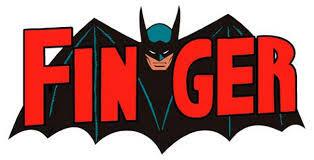 The first time I ever walked into Fenway Park, I thought to myself, “Hey, this is just like Reading, only bigger…”
And older, of course. Fenway Park opened shortly after the Titanic went down in 1912. Reading Municipal Stadium, as it was known when it opened, has been hosting baseball games since 1951. That makes it a relic by today’s standards, but the ironic thing is the movement in stadium building (which ought to be about finished now, right? Doesn’t every city, town and hamlet have its own new ballpark by now?) is to be both old and new at the same time.
The first time I ever walked into Fenway Park, I thought to myself, “Hey, this is just like Reading, only bigger…”
And older, of course. Fenway Park opened shortly after the Titanic went down in 1912. Reading Municipal Stadium, as it was known when it opened, has been hosting baseball games since 1951. That makes it a relic by today’s standards, but the ironic thing is the movement in stadium building (which ought to be about finished now, right? Doesn’t every city, town and hamlet have its own new ballpark by now?) is to be both old and new at the same time.
Reading appears to have gotten that part right in 1951.
I was the last Philly-area scribe out of the ballpark last night following Kyle Drabek’s 10th outing for the R-Phils, and on the way out I flashed back to a few of those times at Fenway. Walking those empty corridors in search for an exit was reminiscent of a time in 2004 when Jim Thome and I (name-dropping!) did the same thing. See, at Fenway, the visitors’ clubhouse opens right out on the main concourse and the ballplayers have to walk through the same halls the fans traipsed through during the game. So when looking for the way out – me to an elevator to write a story before walking back to the Marriott, Thome to his waiting town car – Thome talked about the ambiance of the joint and I mentioned how it reminded me of Reading, Pa.
Back when Thome played in the Double-A Eastern League, he probably saw the same thing. Just like Fenway, the clubhouses at FirstEnergy Stadium (as it’s called now) open right onto the concourses. The difference is that the ballplayers actually have to wade through the fans in order to get back to the showers and training room. Another difference is that the home clubhouse in Reading is larger than the visitors’ clubhouse at Fenway.
Another difference is at Fenway they sell chowder and lo mein on the concourse. At Reading it’s funnel cake and Yeungling.
Anyway, Reading’s moniker as, “Baseball Town” is well deserved. In fact, the web site Minor League News rated FirstEnergy as the second-best ballpark in the country. The funny thing about that is all the other minor-league parks rated in the top 10 all opened since 2000. To me that should give Reading more points since those other places seem to be attempting to create what FirstEnergy has naturally.
It looks like a smaller, chowder-less Fenway inside, a little like old Memorial Stadium in Baltimore on the outside, which opened around the same time as the park in Reading, but was demolished in 2001. But comparisons aside, the little ol’ ballpark in Reading, Pa. is pure baseball through and through.
For those into the game at its bare essence, it’s tough to beat Reading, Pa.
*
 Along those lines, Coca-Cola Park in Allentown is nothing to sneeze at either. Chances are Pedro Martinez will be working in his second rehab assignment this Friday in A-town, so some folks who rarely venture out of the city confines might make the trip up the NE Extension, too.
Along those lines, Coca-Cola Park in Allentown is nothing to sneeze at either. Chances are Pedro Martinez will be working in his second rehab assignment this Friday in A-town, so some folks who rarely venture out of the city confines might make the trip up the NE Extension, too.
Which brings up an interesting point…
Here in Lancaster they have an Atlantic League ballclub managed by ex-Cardinal/Twin/Phillie Tom Herr where they play games in one of those nouveau minor-league parks that pop up everywhere like a big box store in a strip mall. Truth be told, it’s a pretty nice way to spend an evening in a place where there are a dearth of truly exciting things to do.
Nevertheless, Lancaster’s ballpark will never be a destination for the hardcore baseball fan simply because there is no reason to watch a game there. In Lancaster, the pro team will never have Major Leaguers in town for a rehab game or the hot prospects around for a summer or two on the path to the big leagues. With no affiliation with a big league club in a city that could very well support a Double-A club, the team is filled with guys just hoping for one last chance or just playing for the love of the game.
Nothing wrong with that.
But it doesn’t make for quality baseball. Sure, the majority of folks don’t go to baseball games for the quality of the game, but, you know, I do. And there are other seamheads out there into the same thing.
Quality… why is that so difficult a concept to accept these days? And that just ain’t for baseball, either. Give people something good instead of a sales pitch and they'll beat down the door.
That's guaranteed.



